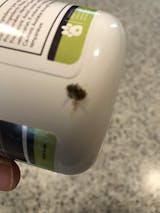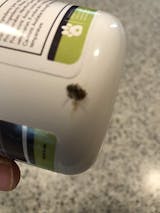Knowing a few basic first aid procedures can make a huge difference in a pet emergency if you ever find yourself facing a life-threatening situation.
Keep in mind this article is not meant to substitute veterinary attention but to simply educate owners on pet emergency procedures.
Below are some of the most common emergency scenarios owners might encounter with their pet:
Did you know? 58% of pet owners will be somewhat likely to perform CPR on a pet in need
Step 1 - Examine your dog’s body for warning signs
-
Check gums and tongue
- Your dog’s gums and tongue should be pale to medium pink. If your dog naturally has black gums, check his tongue.
- If the gums or tongue are blue, purple, white, brick-colored or extremely bright red, seek veterinary medical attention immediately. Something may be impeding the flow of blood throughout your dog's body.
-
Lift the upper lip and press above a canine tooth with your thumb. Release your thumb then watch for a color change where you pressed.
- The gum color should change from white to pink within two seconds.
-
Check your dog’s pulse
- A normal resting adult dog’s heart rate is between 70 and 140 beats per minute. Larger dogs are typically at the lower end of the scale.
- If a dog’s heart rate is over 180 beats per minute, seek immediate medical attention.
-
Check for breathing
-
Check pupils
- Dilated and non-responsive to light.
-
Identify strange behaviors
- Loss of balance
- Vomit/diarrhea
- Sudden loss of appetite

Step 2 - Determine the severity of your dog's condition
After examining your dog, you should be able to determine the severity of the pet emergency. For example, if your dog is not breathing or has no pulse then you need to act right away. You might not have enough time to take your dog to the veterinary. On the other hand, if your dog is vomiting or has diarrhea, then you need to take him to the veterinarian immediately.
Did you know: 60% of animal hospital visits are an emergency, but 1 out of 3 pets could be saved if a first-aid technique was applied prior to seeking veterinary treatment.
Step 3 - Pet emergency: take action
Poison
1. Contact your veterinary or the Animal Poison Hotline at 888.426.4435 or 855.764.7661
2. Identify the substance, the amount ingested, and how much time has passed.
3. Collect a sample of the material, packaging, vial, or container, and save it.
4. Do NOT give your dog any milk, food, salt, oil, or any other home remedies! Also, never induce vomiting without talking to your veterinarian or Pet Poison Helpline.
5. Don’t give hydrogen peroxide to your pet without checking with a vet or with Pet Poison Helpline first. For you cat lovers, hydrogen peroxide doesn’t work well to induce vomiting (it just causes massive foaming and salivating instead!)
Pet emergency: Heat stroke
1. Remove your dog from the heat - take him indoors or move him to a shaded area.
2. Allow the dog to drink cool water. If he cannot drink, wet his lips, gums, and tongue.
3. Cool the dog with water by using a low-pressure hose or a wet towel. Give priority to the dog’s paws, head, and tail.
4. Place rubbing alcohol on the pads of the dog’s paws. *Don’t use too much alcohol as it can be harmful if ingested.
5. Don’t cover or confine the dog.
6. Transport your dog to a veterinarian as soon as possible.
No Pulse and not breathing

Steps
1. On a flat spot, lay your dog on his right side
Small Dogs: Wrap your hand around the sternum directly over the heart and squeeze.
Medium & Large Dogs: Place your palms on your dog’s ribcage over his heart.
2. Push dog on his chest so that you are compressing it about 1/4 to 1/3 of the way. 100 to 120 compressions per minute.
3. After every 30 compressions, hold his mouth shut and breathe into his nose 2 times.
4. Repeat steps 3 and 4 until your dog is responsive or until 20 minutes have passed.
Not breathing but has a pulse
1. Cats & Small Dogs: Place your mouth over its nose and mouth to blow air in.
Medium & Large Dogs: Place your mouth over its nose to blow air in.
If breath won't go in, the airway may be blocked, so open your dog’s mouth and check for foreign objects.
2. Begin Heimlich Maneuver:
1. Head facing down like a wheelbarrow
2. Sweep mouth from side to side to see if you can dislodge the object from your dog.
3. Compress the abdomen by pushing with your fist - Using both arms give five sharp thrust to the abdomen.
4. Check its mouth or airway for the object. If you see it remove it.
Pet emergency: Toxic Exposure
Steps
1. Look around the area for insecticides, rodenticides, house cleaners, fertilizers or any other toxic chemical that your pet may have been exposed to.
2. Follow instructions on the packaging for rinsing and decontamination.
3. Call your vet immediately.
















